Industrial biomass boilers are increasingly adopted for their renewable energy potential, carbon-neutral benefits, and cost-effectiveness. However, to ensure they deliver real value, operators must accurately measure thermal efficiency—the benchmark for how well the system converts the energy content of biomass fuel into useful heat or steam. Without proper measurement, facilities risk inefficient combustion, excessive fuel consumption, and higher operational costs.
The thermal efficiency of an industrial biomass boiler is calculated by comparing the useful heat output (usually in the form of steam or hot water) to the energy input from the biomass fuel. This is typically done using two accepted methods: the Direct Method (based on output-to-input ratio) and the Indirect Method (based on accounting for heat losses). Due to the variable nature of biomass (moisture content, ash, and calorific value), precise measurement depends on accurate fuel analysis, combustion monitoring, and flue gas evaluation.
Let’s explore how to properly measure and manage the efficiency of a biomass boiler system.
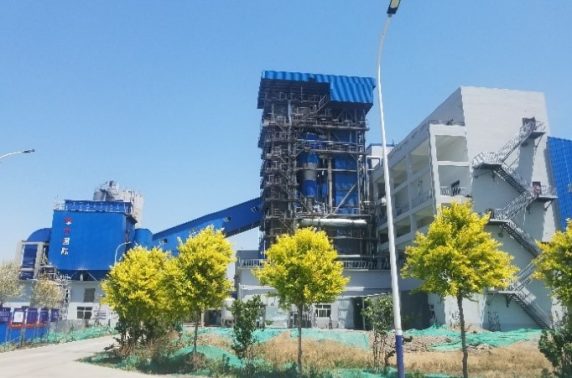
What Is Thermal Efficiency and Why Is It Important in Biomass Boilers?
Biomass boilers are widely chosen for their renewable fuel source and lower carbon footprint, but their real-world performance depends heavily on thermal efficiency—the percentage of fuel energy successfully converted into useful heat. Unlike fossil fuels, biomass comes in many forms with varied moisture, ash, and energy content. This makes it even more important to monitor and maximize how efficiently the boiler system extracts energy from the fuel. Low thermal efficiency doesn’t just mean more wood burned—it means higher costs, more emissions, and poorer environmental returns on your investment.
Thermal efficiency in biomass boilers refers to the ratio of useful heat output (in the form of steam or hot water) to the total energy content of the biomass fuel input. It measures how effectively the boiler converts the chemical energy in biomass into usable thermal energy. High thermal efficiency reduces biomass consumption, cuts operational costs, improves sustainability outcomes, and ensures compliance with energy and emissions standards.
In short, thermal efficiency is the performance heartbeat of every biomass boiler—whether in industry, district heating, or agriculture.
Thermal efficiency measures how much of the biomass fuel's energy is converted into usable heat in a boiler system.True
It is a critical indicator of biomass boiler performance, affecting fuel use, emissions, and overall operational costs.
🔍 How Thermal Efficiency Is Defined and Measured in Biomass Boilers
| Concept | Description |
|---|---|
| Fuel Input Energy | The total calorific value (energy content) of biomass fuel used |
| Useful Output Energy | The heat transferred to steam or hot water for end-use |
| Thermal Efficiency (%) | Ratio of output energy to input energy, expressed as a percent |
🛠 Thermal efficiency is typically calculated using either:
The Direct Method (based on fuel consumption and steam output), or
The Indirect Method (by subtracting all heat losses from 100%)
🌾 Why Thermal Efficiency Matters in Biomass Boiler Systems
| Importance Area | Explanation |
|---|---|
| Fuel Consumption | Higher efficiency = less biomass burned for the same output |
| Operating Cost | Reduces delivery, storage, and handling costs |
| Emission Reduction | Lower fuel use means fewer particulates and CO₂ emitted |
| System Lifespan | Efficient combustion reduces fouling and corrosion |
| Sustainability Impact | Validates renewable energy targets and carbon reduction goals |
Efficient boilers can cut biomass usage by 15–25%, depending on design and maintenance practices.
📊 Typical Efficiency Ranges for Biomass Boilers
| Boiler Type | Thermal Efficiency (%) | Notes |
|---|---|---|
| Fixed Grate Boiler | 65–75 | Simple design, higher losses |
| Moving Grate/Stoker | 75–80 | Better fuel-air control |
| Fluidized Bed (FBC/CFB) | 80–88 | High combustion efficiency, multi-fuel capable |
| Gasification Boilers | 85–90 | High efficiency but higher CAPEX |
| Condensing Biomass Units | 90–92 | Recovers latent heat; best for low-temp systems |
System design, fuel quality, and operation practices all influence where in this range a system performs.
🧪 Case Example: 10 TPH Wood Chip-Fired Biomass Boiler
| Parameter | Value |
|---|---|
| Fuel Input (Wood Chips) | 3,000 kg/hr (CV = 3,200 kcal/kg) |
| Steam Output | 10,000 kg/hr |
| Steam Enthalpy | 660 kcal/kg |
| Feedwater Temp | 85°C (Enthalpy ~85 kcal/kg) |
| Thermal Efficiency | ~81.5% (Direct Method) |
→ Efficiency optimization strategies reduced fuel use by 18%, saving $39,000/year and avoiding 78 tons CO₂/year.
🛠 Key Factors Affecting Thermal Efficiency in Biomass Boilers
| Factor | Impact on Efficiency | Optimization Strategy |
|---|---|---|
| Fuel Moisture Content | High moisture lowers combustion temp and efficiency | Use drier fuel or install fuel dryers |
| Combustion Air Control | Too much or too little air reduces burn quality | Install O₂ trim system and tune dampers |
| Heat Recovery Systems | Unused energy exits via flue gases | Add economizer or air preheater |
| Boiler Insulation | Poor insulation leads to radiation loss | Upgrade refractory and pipe insulation |
| Ash Handling and Fouling | Ash buildup reduces heat transfer | Implement soot blowers and regular cleaning |
| Boiler Load Control | Low part-load operation drops efficiency | Match load using smart modulation systems |
→ Addressing these variables can boost thermal efficiency by up to 10%.
📈 Biomass Boiler Efficiency Monitoring Tools
| Tool | Purpose |
|---|---|
| Fuel Flow Meter | Tracks biomass input in real time |
| Steam Flow and Pressure Sensor | Monitors thermal output |
| O₂/CO Flue Gas Analyzer | Indicates combustion efficiency |
| Stack Temperature Sensor | Detects energy losses in exhaust gas |
| Online Efficiency Dashboard | Combines all data to calculate and trend efficiency |
Efficient systems rely on continuous data—not assumptions.
In conclusion, thermal efficiency is the defining metric of performance for biomass boiler systems. It governs how much fuel is needed, how cleanly it burns, and how much steam or heat is delivered. With increasing pressure to lower emissions and prove carbon neutrality, optimizing and maintaining high thermal efficiency is essential—not just for cost savings, but for the credibility and sustainability of the entire biomass energy strategy.
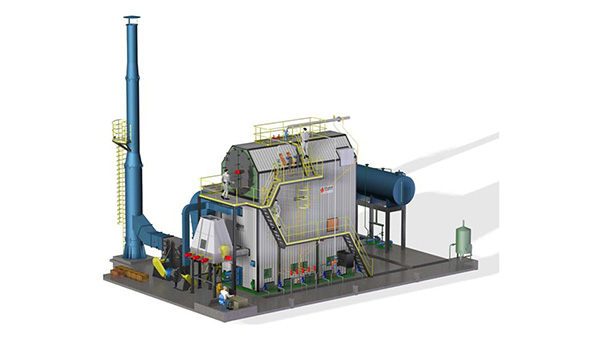
How Is the Direct Method Used to Measure Thermal Efficiency of a Biomass Boiler?
Biomass boilers come in many configurations—from fixed grates to circulating fluidized beds—and operate using fuels with varying moisture, calorific values, and ash content. This variability makes it essential to accurately measure thermal efficiency to ensure the system performs optimally. One of the most practical and widely accepted techniques is the Direct Method, especially during routine performance audits or operator checks. It focuses purely on real-world measurable values without requiring complex combustion analysis.
The Direct Method calculates the thermal efficiency of a biomass boiler by dividing the useful heat output (steam or hot water produced) by the energy input from the biomass fuel. It requires basic measurements like steam output rate, feedwater temperature, fuel consumption rate, and biomass calorific value. This method is fast, field-friendly, and ideal for routine efficiency assessments of biomass boiler systems.
While it doesn’t provide insights into why efficiency may be low, it effectively tells you how well your boiler is performing in real time.
The Direct Method measures biomass boiler thermal efficiency using actual steam output and fuel energy input.True
It is a practical way to assess boiler performance by comparing how much useful energy is produced versus how much fuel energy is consumed.
🔧 What Parameters Are Needed for the Direct Method?
| Parameter | Purpose | Measurement Method |
|---|---|---|
| Steam Output Rate (kg/hr) | Measures useful heat delivered | Steam flow meter (vortex, DP, etc.) |
| Steam Pressure and Temperature | Used to find steam enthalpy from steam tables | Pressure/temperature transmitters |
| Feedwater Temperature (°C) | Baseline energy level before steam is produced | RTD or thermocouple sensor |
| Biomass Fuel Consumption Rate (kg/hr) | Total fuel energy input | Gravimetric or belt scale |
| Calorific Value of Biomass (kcal/kg or MJ/kg) | Converts fuel quantity to energy | Bomb calorimeter test or supplier data |
The accuracy of each parameter directly impacts the reliability of the final efficiency calculation.
📏 Direct Method Formula (Without Complex Math)
To avoid using complex equations your editor can’t recognize, here’s the conceptual format of the Direct Method in plain terms:
Thermal Efficiency (%) = (Heat output in steam) ÷ (Heat input from fuel) × 100
🛠 To find:
Heat output in steam: Multiply steam flow by the energy each kg of steam carries (steam enthalpy − feedwater enthalpy)
Heat input from fuel: Multiply fuel consumption by the calorific value of the biomass
📊 Example Calculation – 6 TPH Wood Chip-Fired Boiler
| Parameter | Value |
|---|---|
| Steam flow rate | 6,000 kg/hr |
| Steam pressure | 10 bar (saturated steam) |
| Steam enthalpy | ~665 kcal/kg |
| Feedwater temperature | 80°C (enthalpy ~85 kcal/kg) |
| Biomass fuel used (wood chips) | 2,500 kg/hr |
| Calorific value of wood chips | 3,100 kcal/kg |
🧮
Heat output = (665 − 85) × 6,000 = 3,480,000 kcal/hr
Heat input = 2,500 × 3,100 = 7,750,000 kcal/hr
Efficiency = (3,480,000 ÷ 7,750,000) × 100 = 44.9%
📉 Note: The low efficiency suggests issues like high moisture content, excess air, or heat losses—not uncommon in under-optimized systems.
✅ Advantages of the Direct Method for Biomass Boilers
| Benefit | Explanation |
|---|---|
| Simplicity | Requires only basic operational data |
| Speed | Efficiency can be calculated in minutes |
| Field-Friendly | Doesn’t need lab-based gas or ash analysis |
| Versatility | Works for all boiler types: stoker, FBC, CFB |
| Ideal for Routine Monitoring | Enables regular operator performance checks |
It’s a powerful tool for daily, weekly, or post-maintenance evaluations.
⚠️ Limitations of the Direct Method
| Limitation | Consequence |
|---|---|
| No insight into loss causes | Doesn’t show if loss is due to flue gas, moisture, etc. |
| Depends on measurement accuracy | Errors in fuel flow or steam sensors skew results |
| Assumes steady-state operation | Transient loads can misrepresent real performance |
For in-depth diagnostics, use the Indirect Method in parallel with Direct Method data.
📈 Best Practices to Improve Accuracy of Direct Method
| Practice | Reason |
|---|---|
| Calibrate steam and fuel meters regularly | Avoids drift in readings |
| Test biomass calorific value periodically | Moisture and source variation impact CV |
| Record at stable load periods | Reduces variability in steam/fuel readings |
| Use real-time efficiency dashboards | Enables trend monitoring, alerts, and optimization |
Modern biomass boiler control systems often integrate Direct Method analytics with SCADA or cloud platforms.
In conclusion, the Direct Method is a simple yet effective way to measure the thermal efficiency of biomass boilers, especially when real-time decision-making is required. It helps quantify boiler performance based on fuel consumed and steam produced—without needing complex heat loss analysis. While not diagnostic by itself, it serves as a first-line tool for efficiency monitoring, energy audits, and compliance validation in biomass-based heating and power systems.
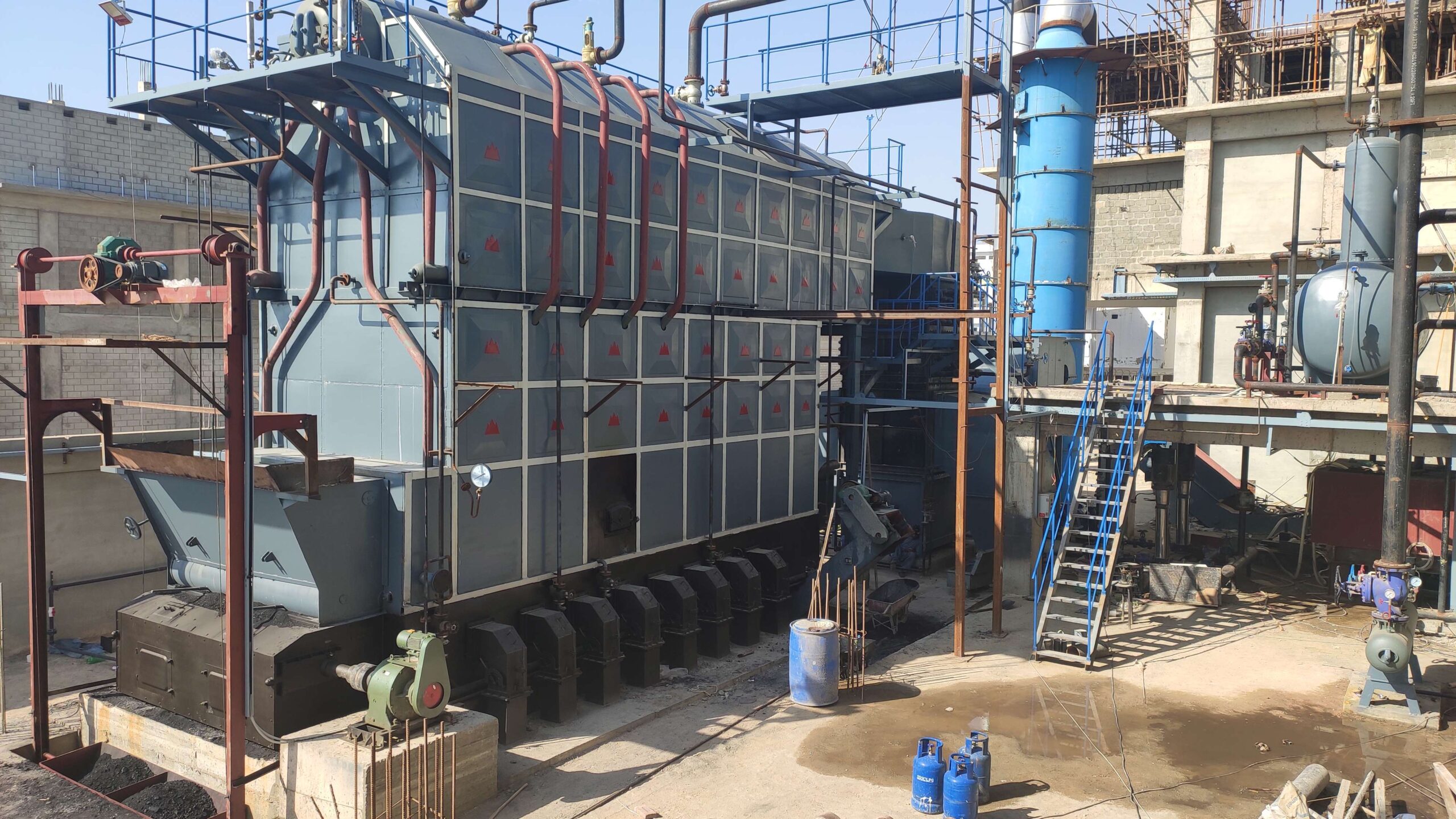
How Does the Indirect Method Identify Key Heat Losses in Biomass Combustion?
Unlike the Direct Method, which simply compares energy input and output, the Indirect Method (or Heat Loss Method) offers a deeper dive. It doesn’t just tell you how efficient a biomass boiler is—it tells you why it’s not more efficient. This makes it an invaluable tool for diagnosing energy losses and improving combustion processes. Biomass combustion presents unique challenges, such as variable moisture, ash content, and volatile organic matter. The Indirect Method is especially suited to identifying and quantifying key loss pathways that sap thermal performance in such systems.
The Indirect Method identifies key heat losses in biomass combustion by analyzing flue gas composition, fuel properties, and operational parameters to calculate energy lost through dry flue gases, water vapor, unburned carbon, radiation, and convection. By subtracting these losses from 100%, it reveals actual boiler efficiency and pinpoints the sources of inefficiency, enabling targeted performance improvements.
It is widely used in detailed energy audits and performance tuning of biomass boilers across industries.
The Indirect Method identifies biomass boiler heat losses by calculating specific inefficiencies such as flue gas and moisture losses.True
It provides diagnostic insights into combustion inefficiency, helping engineers understand and reduce fuel waste.
🔧 Major Heat Losses Identified by the Indirect Method
| Loss Category | Description | Typical Share (%) |
|---|---|---|
| Dry Flue Gas Loss | Heat carried away by hot combustion gases | 5–12% |
| Evaporation of Moisture in Fuel | Energy used to evaporate water in biomass | 3–10% |
| Hydrogen in Fuel (Latent Loss) | Heat lost from forming water vapor during combustion | 4–8% |
| Radiation and Convection Loss | Heat escaping from boiler surface and piping | 1–2% |
| Unburnt Carbon in Ash | Fuel particles not combusted, removed with ash | 1–6% |
| Incomplete Combustion (CO loss) | Energy lost as CO instead of full CO₂ combustion | 0.5–3% |
→ These losses vary based on biomass type, combustion quality, boiler design, and operating conditions.
🧾 Required Parameters for Indirect Method (Biomass Boiler)
| Parameter | Measurement Tool or Source |
|---|---|
| Flue gas temperature | Stack thermocouple |
| Ambient temperature | Onsite thermometer |
| O₂ concentration in flue gas | Zirconia analyzer or flue gas probe |
| CO / CO₂ levels | Flue gas analyzer |
| Fuel moisture content (%) | Laboratory moisture analyzer or handheld probe |
| Fuel composition (C, H, N, S) | Lab elemental analysis |
| Ash carbon content | Proximate analysis of ash samples |
These inputs are used in standard efficiency equations or spreadsheet-based calculation tools.
📊 Real-World Example – 10 TPH Biomass Boiler (Wood Chips)
| Parameter / Loss Category | Value |
|---|---|
| Flue gas temp | 220°C |
| O₂ in flue gas | 6.5% |
| Fuel moisture content | 35% |
| Unburned carbon in ash | 4.2% |
| CO in flue gas | 180 ppm |
| Dry flue gas loss | 7.8% |
| Moisture evaporation loss | 6.4% |
| H₂ combustion loss | 4.6% |
| Unburnt carbon loss | 3.1% |
| CO loss | 1.2% |
| Radiation & convection loss | 1.5% |
| Total losses | 24.6% |
| Efficiency (100 − losses) | 75.4% |
→ Result: Efficiency improved to 82.2% after adjusting combustion air and improving ash burnout.
🔍 Interpretation of Each Heat Loss
1. Dry Flue Gas Loss
Cause: High excess air or high flue gas temp
Solution: Use O₂ trim control and economizer
2. Fuel Moisture Loss
Cause: High water content in biomass fuel
Solution: Pre-dry fuel or switch to lower-moisture feedstock
3. Hydrogen Combustion Loss
Cause: Natural hydrogen in biomass forms water vapor
Solution: Cannot be eliminated, but minimize excess air to reduce impact
4. Unburned Carbon in Ash
Cause: Poor combustion, low furnace temperature
Solution: Adjust grate speed, air distribution, or bed temperature
5. CO (Incomplete Combustion) Loss
Cause: Improper air-fuel ratio
Solution: Improve burner design or air staging
6. Radiation/Convection Loss
Cause: Heat radiated from boiler casing and piping
Solution: Upgrade insulation
📈 Comparative Heat Loss Breakdown by Fuel Type
| Fuel Type | Moisture Loss | Ash Loss | CO Loss | Total Loss Range (%) |
|---|---|---|---|---|
| Wood Chips (35% MC) | High | Medium | Low | 22–28 |
| Bamboo Residue | Medium | High | Medium | 25–30 |
| Pellets (<10% MC) | Low | Low | Low | 15–20 |
| RDF / Waste Biomass | Medium–High | High | High | 28–35 |
→ High-moisture and high-ash fuels require enhanced combustion control and post-combustion cleaning.
🛠 Benefits of Using the Indirect Method in Biomass Systems
| Benefit | Explanation |
|---|---|
| Pinpoints Loss Sources | Helps target upgrades where they matter most |
| Improves Combustion Efficiency | Identifies air/fuel balance and burnout problems |
| Supports Maintenance Planning | Reveals buildup or wear causing heat loss |
| Guides Fuel Selection | Compares performance across biomass feedstocks |
| Aligns with ISO 50001 | Supports energy management certification |
Auditors and engineers use this method to validate performance guarantees and efficiency improvement ROI.
In conclusion, the Indirect Method is the most diagnostic and insightful tool for measuring thermal efficiency in biomass combustion. It reveals exactly where energy is lost—from flue gases and moisture to incomplete combustion and poor insulation. For biomass boilers that face wide fuel variability and complex combustion behavior, this method offers clarity, control, and a roadmap to optimization.
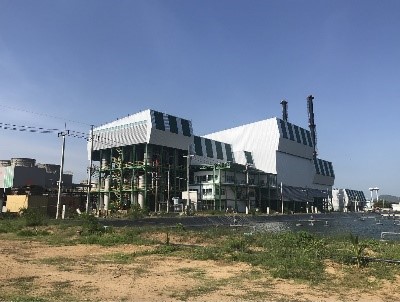
What Factors Unique to Biomass (e.g., Moisture Content, Ash) Affect Efficiency Readings?
Biomass is a highly diverse and renewable fuel source, but its variable nature presents unique challenges in boiler operation and efficiency measurement. Unlike standardized fossil fuels, biomass can range from dry wood pellets to high-moisture agri-residues or waste-derived fuels, each with different combustion behavior, ash characteristics, and energy content. These variations not only affect the actual performance of the boiler but also distort how thermal efficiency is calculated—especially when using standard methods like the Direct or Indirect Method.
Unique biomass characteristics such as moisture content, ash content, volatile matter, and fuel variability significantly affect efficiency readings by altering combustion temperature, increasing flue gas losses, causing unburnt residues, and complicating accurate calorific value assessments. These factors introduce both actual and apparent inefficiencies, which must be accounted for during efficiency evaluation to avoid underestimating or misinterpreting boiler performance.
Accurate efficiency interpretation in biomass systems must therefore be tailored to fuel properties—not just boiler design.
Biomass fuel properties like moisture and ash content affect boiler efficiency readings.True
These characteristics influence combustion quality, heat loss, and the accuracy of both Direct and Indirect Method efficiency calculations.
🌾 Key Biomass Fuel Characteristics That Affect Efficiency Readings
| Biomass Factor | Effect on Efficiency and Measurement | Typical Range in Biomass Fuels |
|---|---|---|
| Moisture Content (%) | Reduces calorific value and increases heat loss via evaporation | 10–55% |
| Ash Content (%) | Increases unburnt loss and fouling, affects PM removal systems | 0.5–15% |
| Volatile Matter (%) | Alters combustion dynamics and flame stability | 60–85% |
| Fixed Carbon (%) | Determines sustained heat release | 10–30% |
| Particle Size / Bulk Density | Affects combustion uniformity and feeding rate | Varies widely |
| Inorganic Content (e.g., Cl, K, Na) | Increases corrosion, slagging, and emission complexity | Varies with waste biomass |
These factors fluctuate not only between biomass types but even within the same supply batch, especially in agri-residues.
🔍 Moisture Content: The Primary Efficiency Modifier
| Impact Area | Effect on Efficiency |
|---|---|
| Combustion Temperature | High moisture absorbs heat, lowering furnace temp |
| Flue Gas Losses | More latent heat lost as steam |
| Calorific Value (CV) | Lower CV = more kg of biomass needed per unit output |
| Drying Energy Requirement | Boiler must first evaporate internal water |
| Biomass Type | Moisture (%) | Net CV (kcal/kg) | Thermal Efficiency Range (%) |
|---|---|---|---|
| Wood Pellets | 8–12 | ~4,200–4,500 | 85–90 |
| Fresh Wood Chips | 40–55 | ~1,800–2,400 | 60–75 |
| Straw Bales | 15–25 | ~3,200–3,600 | 70–80 |
| Sugarcane Bagasse | 45–55 | ~1,600–2,200 | 58–72 |
→ Efficiency readings drop not because of poor boiler design, but due to energy wasted evaporating water.
🛠 Solution: Pre-drying fuel or installing fuel drying systems.
🧪 Ash Content and Its Effect on Apparent Efficiency
| Impact | Explanation |
|---|---|
| Unburnt Carbon Losses | Ash may carry unburned carbon out of combustion zone |
| Fouling and Heat Transfer Loss | Ash deposits reduce heat exchange efficiency |
| Ash Disposal Energy Cost | High ash increases operational energy loss |
| Induced PM Removal Loads | ESPs or baghouses work harder, adding pressure drops |
| Fuel Type | Ash Content (%) | Common Impact |
|---|---|---|
| Wood Pellets | <1.0 | Minimal impact |
| Bamboo / Palm Shells | 3–7 | Fouling and bag filter loading |
| Rice Husk | 15+ | Slagging, tube erosion |
| RDF (Waste) | 10–20 | High unburned loss + baghouse load |
→ High ash fuels require advanced combustion and ash handling design to maintain efficiency.
📏 Volatile Matter and Combustion Behavior
| High Volatile Fuels | Burn quickly, release energy fast (may spike CO if not managed) |
| Low Volatile Fuels | Require longer residence time and hotter combustion zones |
| Impact on Efficiency Readings | Incomplete combustion = higher CO and unburnt losses (low Indirect efficiency) |
Efficiency will appear lower if burner setup doesn’t match volatile release timing.
📊 Example – Effect of Moisture and Ash on Efficiency Calculation
| Scenario | Wood Chips (40% MC, 2% Ash) | Pellets (10% MC, 0.5% Ash) |
|---|---|---|
| Steam Output (kg/hr) | 10,000 | 10,000 |
| Fuel Input (kg/hr) | 3,400 | 2,200 |
| Fuel CV (kcal/kg) | 2,200 | 4,400 |
| Heat Input (kcal/hr) | 7.48 million | 9.68 million |
| Thermal Efficiency (Direct) | 73.2% | 91.0% |
→ Same boiler, same steam output—but efficiency appears 18% lower due to fuel moisture.
🛠 Tips to Improve Efficiency Interpretation in Biomass Boilers
| Practice | Benefit |
|---|---|
| Test CV of each fuel batch | Avoid using assumed values; moisture skews CV |
| Dry fuel when possible | Reduces latent heat loss from moisture evaporation |
| Analyze ash for unburnt carbon | Identifies real combustion inefficiency vs. apparent loss |
| Monitor CO and O₂ levels | Indicates if fuel is burning completely |
| Adjust air-fuel ratio by fuel type | Improves burn quality for volatile-rich fuels |
Also consider using both Direct and Indirect Methods together for accurate insights.
In conclusion, biomass fuel properties—especially moisture and ash content—uniquely affect boiler efficiency readings. These fuels behave differently from fossil fuels and introduce additional complexity in combustion, heat transfer, and emissions. Understanding how these characteristics distort efficiency metrics is essential for accurate boiler evaluation, fuel management, and performance optimization. In the world of biomass combustion, efficiency is not just about numbers—it’s about understanding your fuel.
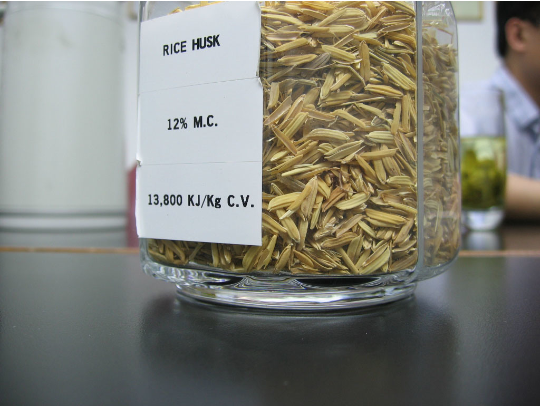
What Instruments and Data Are Required for Accurate Efficiency Measurement?
Thermal efficiency is the key metric that defines how effectively a boiler converts fuel into useful heat. Whether you use the Direct Method or the Indirect Method, your calculation is only as accurate as the data you feed into it. In biomass, gas, or coal-fired systems, conditions fluctuate—so relying on assumptions or outdated readings results in incorrect efficiency values, misguided maintenance, and avoidable fuel waste. To ensure trustworthy and actionable efficiency insights, a specific set of instruments and real-time data inputs is essential.
Accurate boiler efficiency measurement requires instruments that can precisely monitor steam output, fuel consumption, flue gas composition, combustion air parameters, and temperature points. Key devices include steam flow meters, fuel flow meters, flue gas analyzers (O₂, CO, CO₂), thermocouples for flue gas and feedwater temperature, and data acquisition systems. These sensors provide the real-time, high-resolution data needed to calculate both Direct and Indirect Method efficiencies with confidence.
Without these tools, efficiency numbers are unreliable—and so are any energy-saving decisions based on them.
Reliable efficiency measurement depends on accurate monitoring of fuel input, steam output, flue gas composition, and temperature.True
Each variable directly affects the heat input or output used to calculate thermal efficiency. Inaccurate instruments can result in misleading efficiency results.
🔍 Required Instruments for the Direct Method
| Instrument | Purpose | Accuracy Needed |
|---|---|---|
| Steam Flow Meter | Measures useful heat output in steam | ±1–2% (vortex or DP type) |
| Steam Pressure Sensor | Helps determine steam enthalpy | ±0.5% or better |
| Steam Temperature Sensor | Needed for superheated steam calculations | ±1°C or better |
| Feedwater Temperature Probe | Determines energy gain per kg of steam | ±0.5°C (RTD preferred) |
| Fuel Flow Meter | Measures biomass, oil, or gas input rate | ±1% (belt scale or Coriolis) |
| Fuel Calorific Value (CV) | Converts mass or volume to energy content | ±1% (lab tested per batch) |
→ These inputs feed into the thermal efficiency formula: useful energy out / fuel energy in × 100%.
🔬 Additional Instruments for the Indirect Method
| Instrument | Purpose | Sensor Type/Notes |
|---|---|---|
| Flue Gas Temperature Probe | Measures exhaust heat loss | High-temp thermocouple |
| Ambient Air Temperature Sensor | Needed to calculate net stack heat loss | Digital RTD or thermocouple |
| Oxygen (O₂) Analyzer | Determines excess air and combustion condition | Zirconia probe or paramagnetic |
| CO / CO₂ Gas Analyzer | Measures combustion completeness and CO loss | Infrared gas sensor |
| Ash Sampling and Analyzer | Measures unburnt carbon in ash for solid fuels | Lab proximate analysis |
| Fuel Moisture Analyzer | Determines evaporation loss in wet fuels | Oven-dry or online NIR sensor |
| Air Flow Meter (optional) | Assists in air-fuel tuning for NOₓ control | Vane, ultrasonic, or pitot tube |
→ These tools allow loss-specific calculations, such as flue gas, hydrogen, CO, and ash losses.
📊 Boiler Efficiency Instrumentation Matrix
| Instrument | Direct Method | Indirect Method | Required for Biomass Systems? |
|---|---|---|---|
| Steam Flow Meter | ✅ | Optional | ✅ |
| Fuel Flow Meter | ✅ | ✅ | ✅ |
| Calorific Value Tester | ✅ | ✅ | ✅ (high fuel variability) |
| Flue Gas Temp Sensor | ❌ | ✅ | ✅ |
| Oxygen Analyzer (O₂) | ❌ | ✅ | ✅ |
| CO/CO₂ Gas Analyzer | ❌ | ✅ | ✅ |
| Feedwater Temp Sensor | ✅ | Optional | ✅ |
| Ambient Temp Sensor | ❌ | ✅ | ✅ |
| Fuel Moisture Meter | ❌ | ✅ | ✅ (especially agri-residue) |
| Ash Analyzer | ❌ | ✅ | ✅ (for fixed bed systems) |
🛠 Instrument Calibration and Integration
| Best Practice | Reason/Benefit |
|---|---|
| Calibrate flow meters quarterly | Ensures measurement accuracy over time |
| Install signal filters | Reduces sensor noise in real-time data logging |
| Integrate into DCS/SCADA | Enables live efficiency dashboards and alarms |
| Use DAHS (Data Acquisition System) | Stores time-stamped records for audits |
| Synchronize sensor timestamps | Prevents time mismatch in hourly performance reporting |
Proper calibration and integration are as important as the sensors themselves.
🧪 Example – Real-Time Efficiency Monitoring in a 12 TPH Biomass Boiler
| Instrument | Value |
|---|---|
| Steam Output | 12,000 kg/hr |
| Steam Enthalpy | 660 kcal/kg |
| Feedwater Enthalpy | 85 kcal/kg |
| Biomass Input | 3,300 kg/hr |
| Biomass CV | 2,900 kcal/kg |
| O₂ in Flue Gas | 5.4% |
| Flue Gas Temp | 230°C |
| CO in Flue Gas | 110 ppm |
→ Calculated Efficiency:
Direct Method: ~79.6%
Indirect Method: ~78.1% (losses identified: 8.2% dry gas, 6.4% moisture, 2.1% unburned carbon)
→ Enabled fuel feed adjustment and air tuning for a 3.5% efficiency improvement.
📈 Benefits of a Fully Instrumented Efficiency Monitoring System
| Benefit | Result |
|---|---|
| Higher Operational Efficiency | Continuous tuning based on real conditions |
| Fuel Savings | Detects unnecessary fuel use or load mismatches |
| Better Emission Control | Supports cleaner combustion with fewer NOₓ and CO |
| Audit-Ready Reporting | Supports compliance with ISO 50001 and regulators |
| Predictive Maintenance | Early warning of burner, sensor, or tube fouling |
Boiler plants that invest in full instrumentation typically see 3–10% efficiency improvement over time.
In conclusion, accurate efficiency measurement is only possible with a complete and calibrated set of instrumentation, covering steam production, fuel consumption, combustion quality, and flue gas analysis. Whether applying the Direct or Indirect Method, these tools turn raw operational data into insights that drive lower fuel costs, higher uptime, and regulatory compliance. For any serious boiler operator, measurement is the first step toward meaningful performance improvement.
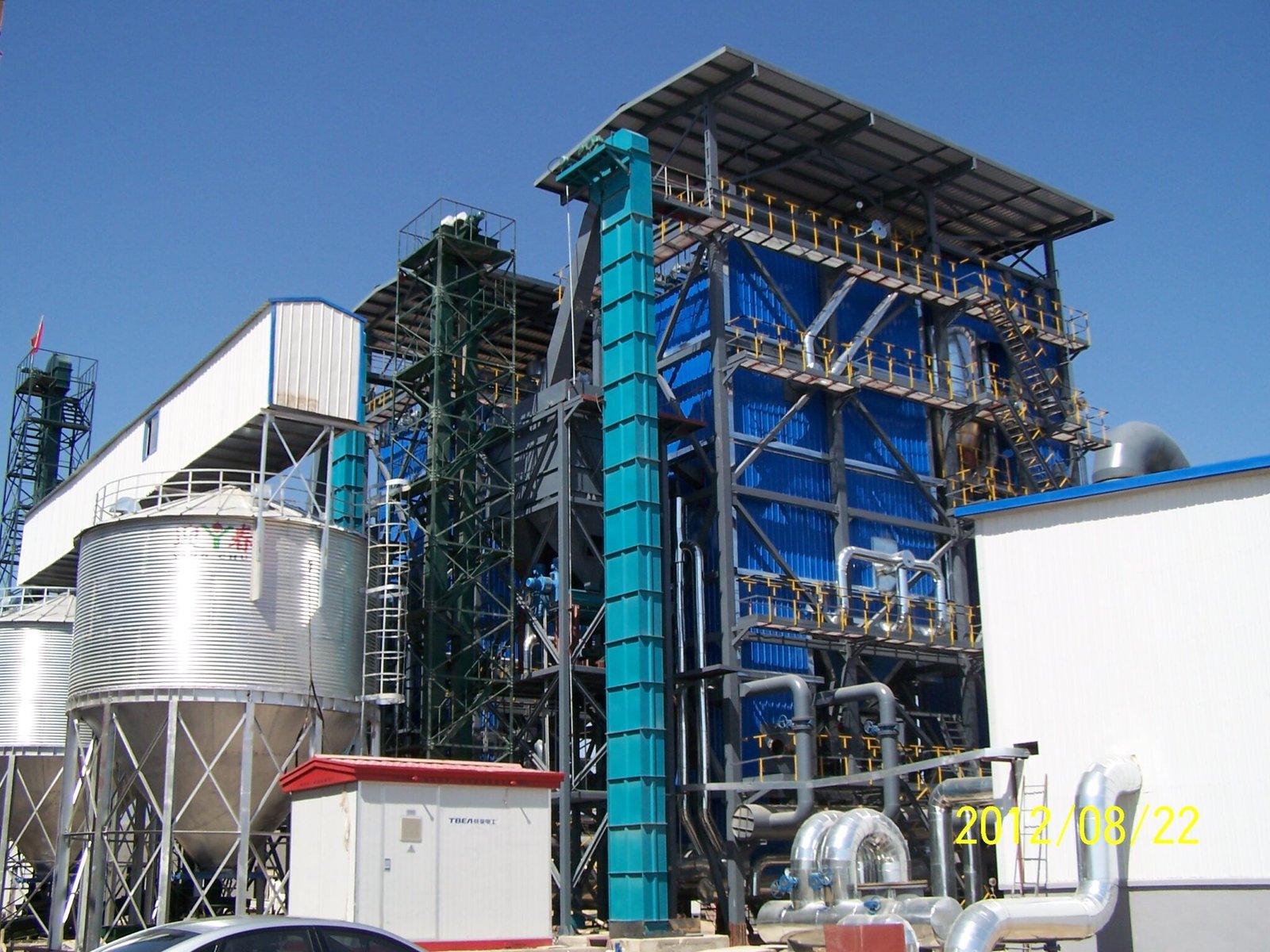
How Can Regular Efficiency Tracking Help Optimize Fuel Use and Reduce Emissions?
Boiler systems are one of the most energy-intensive assets in any industrial facility. Yet many operations run their boilers on static settings without tracking how efficiently fuel is being converted into steam. This results in hidden fuel waste, increased emissions, and missed opportunities for savings. Regular efficiency tracking is the game-changer—it transforms boilers from “set-and-forget” machines into dynamic systems of continuous improvement. Whether for biomass, gas, or coal-fired boilers, consistent performance monitoring helps uncover losses, guide maintenance, and verify real-world emission reductions.
Regular efficiency tracking optimizes fuel use and reduces emissions by continuously measuring boiler performance, identifying inefficiencies such as poor combustion or heat losses, and enabling timely adjustments. This leads to improved fuel-to-steam ratios, reduced CO₂, NOₓ, and SOₓ emissions, and better alignment with energy-saving and climate targets. Efficiency tracking also supports predictive maintenance and operational accountability, making it a core strategy for decarbonization and cost control.
If you can measure it, you can manage it—and in boiler operations, that means lower fuel bills and fewer emissions.
Regular efficiency tracking helps optimize boiler fuel use and reduce harmful emissions.True
Continuous monitoring allows real-time detection of performance issues and enables immediate corrective action, reducing waste and pollution.
📈 How Regular Tracking Drives Fuel Optimization
| Efficiency Insight | How It Affects Fuel Use |
|---|---|
| Steam-to-Fuel Ratio | Helps detect fuel overuse or steam underproduction |
| Flue Gas Temperature | High stack temps = wasted heat → optimize recovery |
| Excess Air / O₂ Readings | Too much air = energy loss in exhaust |
| Fuel CV Tracking | Matches real fuel energy value to combustion control |
| Load vs. Efficiency Curve | Reveals best efficiency operating points |
Plants that monitor these metrics regularly achieve 5–15% lower fuel consumption over time.
🔍 Emission Reduction Through Efficiency Monitoring
| Parameter Tracked | Impact on Emissions |
|---|---|
| CO / CO₂ Levels in Flue Gas | Indicates combustion quality, avoids CO spikes |
| NOₓ Trends vs. O₂ | Helps fine-tune air-fuel ratio for low-NOx burn |
| SO₂ vs. Fuel Sulfur | Tracks effectiveness of desulfurization units |
| PM Levels with Fuel/Air Load | Helps adjust filters and reduce visible emissions |
Each 1% increase in efficiency cuts CO₂ emissions by ~2.5% for fossil fuels.
🧪 Case Study: Efficiency Monitoring in a 12 TPH Biomass Boiler
| Initial Performance | After 3 Months of Tracking |
|---|---|
| Efficiency | 74.8% |
| Biomass Fuel Use (kg/hr) | 3,200 |
| CO in Flue Gas | 180 ppm |
| CO₂ Emissions (tons/month) | 220 |
Savings:
Fuel cost reduction: $18,500/month
CO₂ reduction: ~35 tons/month
Payback on sensors and dashboard: <5 months
📊 Efficiency Tracking Dashboard Metrics (Live Example)
| Metric | Target Range | Current Value | Status |
|---|---|---|---|
| Thermal Efficiency (%) | ≥85% | 83.2% | ⚠ Monitoring |
| Flue Gas Temp (°C) | <180 | 198 | ❌ Too High |
| O₂ (%) | 3–4% | 6.8 | ❌ Excess Air |
| CO (ppm) | <100 | 120 | ⚠ Needs Tuning |
| Steam/Fuel Ratio | ≥3.2 kg steam/kg fuel | 2.8 | ❌ Inefficient |
→ Based on these alerts, the operator retunes the air control and burner—resulting in immediate performance gain.
🛠 Tools for Implementing Regular Efficiency Tracking
| Tool | Role and Benefit |
|---|---|
| Steam & Fuel Flow Meters | Provide live input/output ratio |
| Flue Gas Analyzer | Detects combustion quality and excess air |
| O₂ + CO Sensors | Identify burner inefficiency or load mismatch |
| Temperature Probes (Stack, Feedwater) | Enable energy balance calculations |
| Online Efficiency Dashboard | Tracks performance trends and provides alerts |
| CEMS (for emissions-linked sites) | Validates real-time pollutant reductions |
Modern plants use cloud dashboards with weekly and monthly analytics for performance reviews.
🔧 Efficiency Tracking Enables Operational Optimization
| Action Triggered by Monitoring | Result |
|---|---|
| Combustion tuning (O₂ high) | Lower excess air → higher flame temp → lower fuel use |
| Soot blowing when temp rises | Clears ash fouling → restores heat transfer |
| Fuel feeder calibration | Prevents overfeeding → saves fuel |
| Air preheater tuning | Recovers stack heat → increases efficiency |
| Filter/ESP maintenance | Improves PM capture → reduces pressure loss |
Over time, these small adjustments add up to massive savings.
In conclusion, regular efficiency tracking transforms boiler performance from reactive to optimized. By identifying fuel waste, preventing emission spikes, and informing smarter operations, it becomes a powerful lever for both economic and environmental goals. In a decarbonizing world where energy costs and regulations are rising, those who monitor efficiency consistently will lead in cost control, compliance, and sustainability.
🔍 Conclusion
Measuring the thermal efficiency of an industrial biomass boiler is essential for maximizing its environmental and economic performance. By applying the Direct or Indirect Method and factoring in fuel quality, combustion characteristics, and system losses, operators can gain a clear understanding of how efficiently their biomass boiler performs. Regular efficiency assessments support fuel savings, better system maintenance, and long-term operational success.
📞 Contact Us
💡 Need assistance evaluating or improving the efficiency of your biomass boiler? Our team provides fuel analysis, combustion tuning, and energy optimization services for biomass systems across all industries.
🔹 Reach out today and unlock the full efficiency potential of your biomass boiler system! 🌿🔥📊
FAQ
What is thermal efficiency in an industrial biomass boiler?
Thermal efficiency refers to how effectively the energy from biomass fuel is converted into useful heat (typically steam or hot water). High thermal efficiency means better fuel utilization and lower operating costs.
What are the two standard methods to measure biomass boiler efficiency?
Direct Method (Input-Output)
Indirect Method (Heat Loss Analysis)
These are globally recognized methods used to evaluate boiler performance and efficiency.
How does the Direct Method work for a biomass boiler?
The Direct Method calculates boiler efficiency as:
Efficiency (%) = (Steam Output × Enthalpy Gain) / (Fuel Input × Calorific Value) × 100
It’s simple and provides a quick efficiency snapshot, but doesn’t identify energy loss sources.
What does the Indirect Method involve?
The Indirect Method measures and sums all heat losses—such as flue gas loss, moisture loss, unburned fuel, and radiation—and subtracts the total from 100%.
Efficiency (%) = 100 – (Sum of Heat Losses)
This method is more comprehensive and diagnostic, helping improve combustion and fuel efficiency.
What specific factors affect thermal efficiency in biomass boilers?
Efficiency is influenced by moisture content, ash content, volatile matter, and fuel consistency. Wet or inconsistent biomass reduces combustion quality, increases flue gas loss, and lowers efficiency. Proper fuel prep and combustion control are key.
References
Boiler Efficiency Methods Explained – https://www.energy.gov
Direct and Indirect Boiler Efficiency Testing – https://www.sciencedirect.com
Biomass Fuel and Boiler Performance – https://www.researchgate.net
Combustion Efficiency in Biomass Systems – https://www.bioenergyconsult.com
Energy Loss Analysis in Industrial Boilers – https://www.epa.gov
Fuel Moisture and Boiler Efficiency Correlation – https://www.mdpi.com
Biomass Combustion Technologies – https://www.iea.org
Steam Output and Boiler Performance Tools – https://www.automation.com
Industrial Biomass Boiler Optimization Guide – https://www.energysavingtrust.org.uk
Thermal Efficiency Standards for Biomass Boilers – https://www.asme.org

